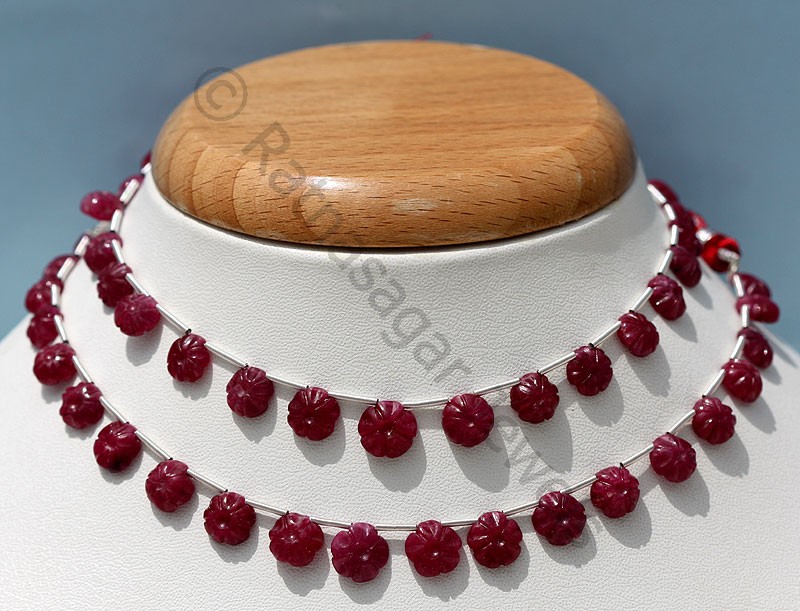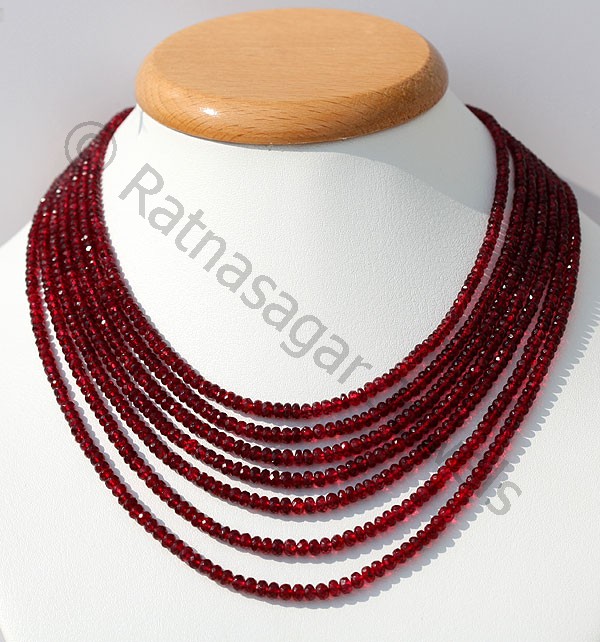12. July 2016 23:23 /
Manoj
/
Comments
(0)
Rubies are one of the rare and precious forms of gemstones, distinguished from the likes of emeralds and diamonds with its garish scarlet red colour. Meanwhile, market boasts of variety of ruby gemstone beads with primary hues ranging from yellow to blue to even purples! But nothing like the pale rose pink rubies that have ruled the hearts of Dukes and Emperors for centuries.

How to tell if the ruby is real or fake? Here is what gem experts do to distinctly identify real rubies from the cheap imposters.
Primary Identification using Colour Consistency test:
What you see is what you get. Ruby is a blood red gemstone belonging to the family of corundum. The colour is present due to the chromium ions that inundate the crystal lattice largely containing aluminium oxide. If the colour is consistent with fine rutile impregnated in the crystal, it means the ruby is fine and untreated. If you miss out on the rutile, it means that the stone has been treated in heat to look finer and give a more consistent colour. A shade of imperfection is what makes rubies so attractive.
Test to find specific gravity:
Purest ruby corundum will bear a specific gravity of 3.98 with tolerance of 0.5% depending on the source of the stone. A special solution called “Clerici” is used to check the specific gravity of a ruby gem. Since the specific gravity of the dense fluid is 4.0, the rubies are supposed to float and displace the same weight of the fluid.
Note: In market, rubies are available in the range between 3.95 and 4.05 specific gravity.
Test for Refractive Index:
In terms of opacity, rubies can show transparency as well as translucency. The refractive index of a pure ruby is anywhere between 1.763 and 1.768 with dispersion measured under spectrometer coming at 0.018. Cheaper version of rubies and other gemstones have a much lower refractive index, often counted between 1.66 and 1.70.
Double Refraction Test:
Now we are taking serious science. Ruby gemstones do not boast of any particular line of cleavage. The fractures occur in conchoids or splintery manner. The hexagonal crystal structure of ruby and the internal fracture plane splits a single beam of light into two, leading to a phenomenon called Double Refraction. When observed under a polariscope, ruby exhibit birefringence or dispersion of 0.08.
Fluorescence Test:
Rubies are exposed to florescent light and the refraction is checked with Chelsea Colour filter. Luminescence of rubies when florescent light is passed through them bears crimson or orange light. No other stone apart from ruby will give a red when exposed to florescent light. This is a key separation test between rubies and garnets.

Popularity of synthetic rubies:
Use of synthetic rubies is not a taboo! They are imitation stones made by burning scarlet wool under the base. They were largely used to manufacture Ruby Lasers in the 60s. Red spinel gemstone beads, red tourmaline, Rubellite and Balas ruby are some of the names you should stay away as a buyer.
Save
d171c7d7-4a63-4365-ade0-5d7b75979c37|0|.0|27604f05-86ad-47ef-9e05-950bb762570c
Tags
: ruby gemstone beads . Ruby gemstones . Ruby beads . Red tourmaline gemstones . Red spinel gemstone